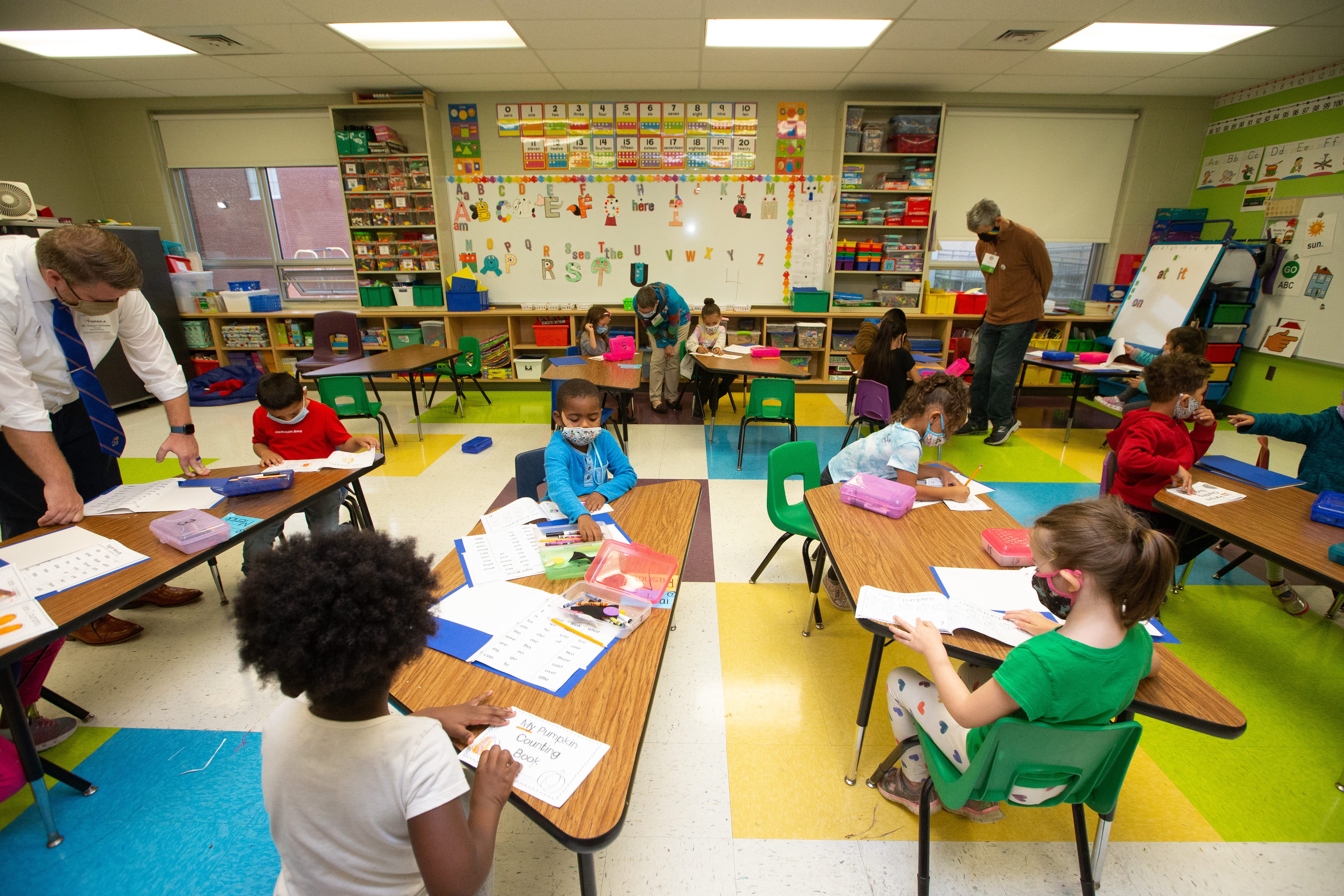Unlock Your Child’s Potential with Primary Science Tuition Singapore
Unlock Your Child’s Potential with Primary Science Tuition Singapore
Blog Article
A Comprehensive Guide to the Numerous Learning Techniques in Main Scientific Research Direction
The exploration of diverse learning techniques in primary scientific research instruction offers a chance for teachers to improve student interaction and understanding dramatically. By checking out hands-on learning techniques, inquiry-based techniques, and collaborative approaches, we can recognize reliable methods that satisfy various finding out designs. Furthermore, the combination of modern technology and distinguished guideline plays a critical role in cultivating a comprehensive environment. The question stays: how can these techniques be successfully applied in the class to maximize their effect? The solution depends on a closer evaluation of each approach and its ramifications for training scientific research.

Hands-On Discovering Strategies
Hands-on learning methods play an essential duty in key science instruction, involving students in active exploration and testing. These techniques permit students to connect straight with products and sensations, cultivating a much deeper understanding of clinical principles. By using manipulatives, models, and real-life experiments, educators create an environment where students can observe, hypothesize, and test their concepts.
Such strategies not just improve understanding yet additionally grow essential reasoning and analytical skills. When students join activities like building easy devices, planting seeds, or conducting chemical reactions, they are urged to ask inquiries and look for answers through their own observations. This experiential method helps to debunk complicated scientific principles, making them extra relatable and obtainable.
In addition, hands-on understanding promotes collaboration among peers, as pupils usually operate in groups to perform experiments or share findings. This teamwork not just enhances their learning experience yet also creates essential social abilities. Ultimately, incorporating hands-on strategies in main scientific research direction fosters a lifelong love of learning and interest about the all-natural globe, laying a solid foundation for future scholastic quests in scientific research and beyond.
Inquiry-Based Understanding
Inquiry-based knowing is an educational approach that encourages trainees to ask inquiries, examine sensations, and construct their own understanding of clinical principles. This method shifts the emphasis from conventional teacher-led direction to an extra student-centered experience, where learners take the effort in their instructional trip. By fostering interest, inquiry-based learning advertises much deeper interaction with the product, permitting pupils to explore topics in a significant context.
In practice, this method usually involves hands-on experiments, observations, and vital reasoning tasks that straighten very closely with the clinical technique. Trainees are urged to create theories, layout examinations, and analyze information, which grows essential abilities such as analytic and logical reasoning. The function of the teacher in this structure is to assist in expedition, directing pupils via the questions procedure while motivating independent thought and partnership.
Furthermore, inquiry-based knowing nurtures a feeling of possession over the discovering process, inspiring students to pursue knowledge proactively. This approach not just boosts understanding of clinical principles however also fosters a long-lasting love for discovering, furnishing trainees with the skills necessary to navigate a significantly complicated world.
Collaborative Learning Approaches
Collective learning techniques empower trainees to take part in meaningful communications with peers, cultivating a shared responsibility for their academic end results. In primary science instruction, these approaches motivate students to collaborate to discover scientific ideas, solve problems, and carry out experiments (primary science tuition Singapore). By taking part in group activities, pupils can utilize diverse viewpoints, permitting richer understanding and retention of special info clinical expertise
One trick aspect of collective learning is the emphasis on communication skills. Students should verbalize their thoughts, listen actively to others, and negotiate ideas, all of which are vital expertises in both real-world and scholastic contexts. This social interaction not only enhances their understanding of scientific principles but also advertises synergy and problem resolution abilities.
In addition, collaborative learning often results in enhanced motivation and involvement. When trainees see the value of their contributions within a team, they are extra most likely to take possession of their understanding trip. Teachers can facilitate this procedure by making structured group jobs that align with educational program goals while providing advice on efficient cooperation methods. On the whole, integrating collaborative understanding methods in primary scientific research instruction grows a dynamic understanding atmosphere that prepares students for future scholastic and social challenges.
Modern Technology Integration in Science
The assimilation of technology in main scientific research instruction boosts learning experiences by offering ingenious devices and resources that support different training methodologies, consisting of joint knowing - primary science tuition Singapore. Using digital platforms, simulations, and interactive applications enables trainees to involve deeply with clinical concepts, facilitating a much more hands-on technique to knowing
Online research laboratories, for example, enable learners to conduct experiments safely and effectively, advertising inquiry-based discovering. These devices can mimic real-world clinical situations, enabling trainees to picture complicated procedures that would be tough to duplicate in a standard class setup. Innovation promotes communication and cooperation amongst trainees, as they can share findings and function with each other on jobs with on the internet platforms.
In addition, multimedia discussions and educational video clips can enhance lessons by catering to diverse understanding styles, making abstract ideas a lot more available. Information analysis devices likewise empower pupils to collect and analyze scientific information, reinforcing crucial assuming skills. Overall, the critical consolidation of modern technology in main scientific research direction not just improves interaction but likewise prepares students for a technically sophisticated culture, equipping them with crucial skills for future scientific undertakings.
Differentiated Direction Approaches
Separated guideline techniques are necessary for addressing the diverse demands of students in primary scientific research education. These methods make it possible for educators to tailor their mentor approaches to accommodate varying capabilities, passions, and learning styles within the read class. By using differentiated instruction, teachers can produce a comprehensive setting that cultivates involvement and enhances understanding of scientific ideas.
One efficient approach is to make use of adaptable organizing, which permits pupils to team up with peers at comparable ability degrees or with varying viewpoints. This approach encourages peer learning and promotes crucial thinking. Additionally, offering choices in assignments can empower students, enabling them to choose jobs that resonate with their interests while still fulfilling curricular purposes.
In addition, including tiered tasks is one more useful method. By designing tasks with differing levels of complexity, instructors can make certain that all trainees are appropriately tested, no matter of their efficiency. Utilizing developmental assessments to gauge recognizing further makes it possible for teachers to readjust their educational approaches dynamically, making sure that each student receives the assistance they need.
Ultimately, applying separated instruction methods in primary scientific research education not just improves pupil knowing end results however additionally her response cultivates an interest for science, preparing trainees for future scholastic quests.

Verdict
In recap, effective main science direction necessitates a complex method that incorporates hands-on understanding, inquiry-based approaches, and joint methods. The integration of innovation and differentiated direction further accommodates varied knowing designs, fostering an atmosphere for exploration and critical thinking. By carrying out these strategies, teachers can boost student engagement and understanding, inevitably nurturing a lifelong passion for science and query. Such thorough methodologies are vital for creating educated and interested future scientists.
The expedition of diverse discovering techniques in main science instruction provides a chance for teachers to improve student engagement and understanding significantly.Hands-on learning strategies play a crucial function in main science instruction, engaging students in energetic expedition and testing.Inquiry-based knowing is an instructional approach that motivates trainees to ask questions, explore sensations, and build their very own understanding of clinical principles.Collective knowing approaches encourage students to involve in significant interactions with peers, cultivating a shared duty for their academic outcomes. On the whole, integrating collective learning strategies in main scientific research instruction grows a dynamic understanding environment that prepares pupils for future academic and social difficulties.
Report this page